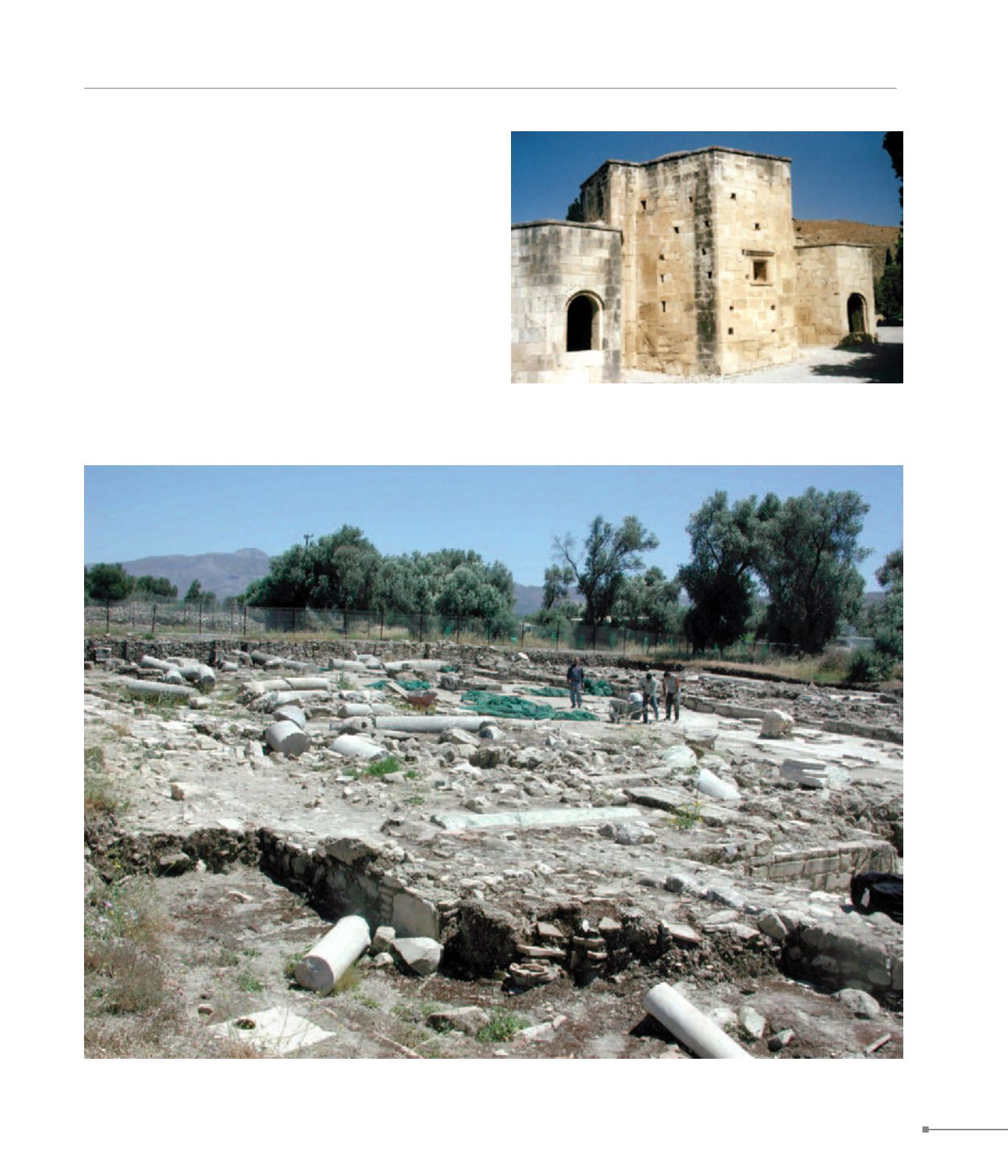
Gortyna.
Gortyna.
CRETE
271
438. Gortyna, Aghios Titos (Γόρτυνα, Άγιος Τίτος)
438. Gortyna, basilica (Γόρτυνα, βασιλική)
and S crossarms. One of the main features is the isodomic
masonry of very large, skilfully dressed, porous stones, which
is associated with the Syrian building tradition, lending sim-
plicity and grandeur to the façades of the large-scale church.
The 5th c. triconch church, with a mosaic floor, located in the
village of Metropolis, is possibly a martyrium. It has been as-
sociated with the Ten Holy Martyrs of Crete, who perished cir-
ca 250-1 during the persecutions of Roman Emperor Decius;
this, however, has not been proved by historical evidence or
excavation finds. At a short distance N of the triconch church,
the largest Early Christian basilica in Crete has been exca-
vated. It is a five-aisled basilican plan church with atrium; only
the E stoa of the atrium has been revealed. The floor of the
aisles is covered by large, porous, rectangular slabs, while
in the nave is found the largest mosaic floor in Crete, which


